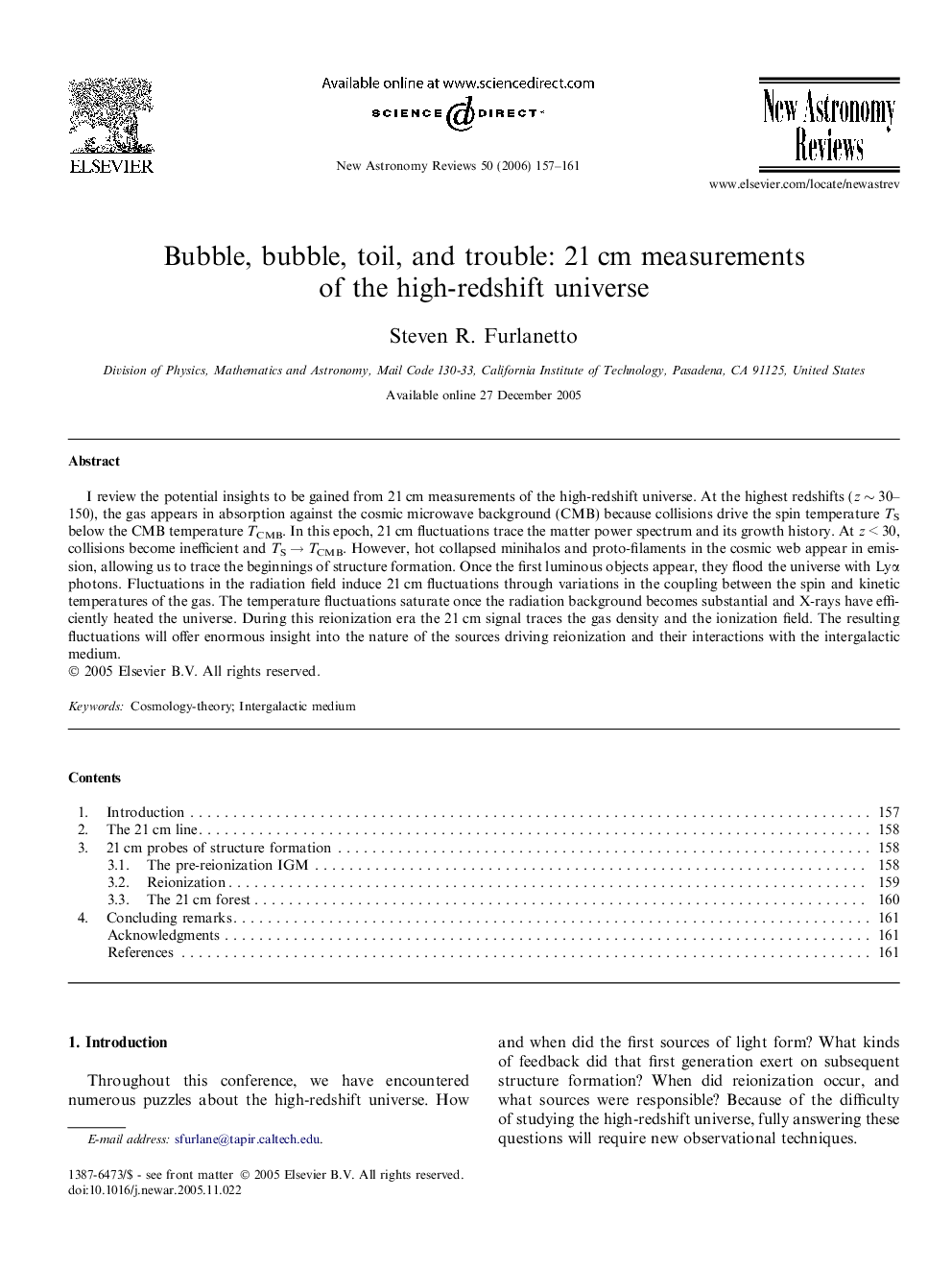| Article ID | Journal | Published Year | Pages | File Type |
|---|---|---|---|---|
| 1780425 | New Astronomy Reviews | 2006 | 5 Pages |
Abstract
I review the potential insights to be gained from 21 cm measurements of the high-redshift universe. At the highest redshifts (z â¼Â 30-150), the gas appears in absorption against the cosmic microwave background (CMB) because collisions drive the spin temperature TS below the CMB temperature TCMB. In this epoch, 21 cm fluctuations trace the matter power spectrum and its growth history. At z < 30, collisions become inefficient and TS â TCMB. However, hot collapsed minihalos and proto-filaments in the cosmic web appear in emission, allowing us to trace the beginnings of structure formation. Once the first luminous objects appear, they flood the universe with Lyα photons. Fluctuations in the radiation field induce 21 cm fluctuations through variations in the coupling between the spin and kinetic temperatures of the gas. The temperature fluctuations saturate once the radiation background becomes substantial and X-rays have efficiently heated the universe. During this reionization era the 21 cm signal traces the gas density and the ionization field. The resulting fluctuations will offer enormous insight into the nature of the sources driving reionization and their interactions with the intergalactic medium.
Keywords
Related Topics
Physical Sciences and Engineering
Physics and Astronomy
Astronomy and Astrophysics
Authors
Steven R. Furlanetto,
